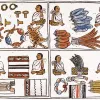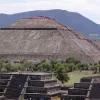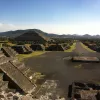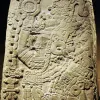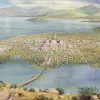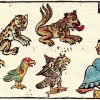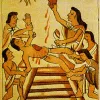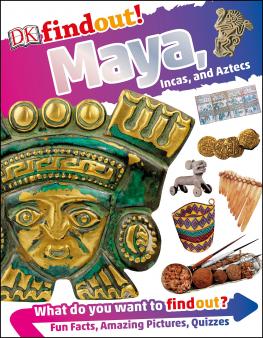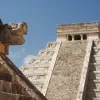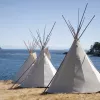Important update from TheSchoolRun
For the past 13 years, TheSchoolRun has been run by a small team of mums working from home, dedicated to providing quality educational resources to primary school parents. Unfortunately, rising supplier costs and falling revenue have made it impossible for us to continue operating, and we’ve had to make the difficult decision to close. The good news: We’ve arranged for another educational provider to take over many of our resources. These will be hosted on a new portal, where the content will be updated and expanded to support your child’s learning.
What this means for subscribers:
- Your subscription is still active, and for now, you can keep using the website as normal — just log in with your usual details to access all our articles and resources*.
- In a few months, all resources will move to the new portal. You’ll continue to have access there until your subscription ends. We’ll send you full details nearer the time.
- As a thank you for your support, we’ll also be sending you 16 primary school eBooks (worth £108.84) to download and keep.
A few changes to be aware of:
- The Learning Journey weekly email has ended, but your child’s plan will still be updated on your dashboard each Monday. Just log in to see the recommended worksheets.
- The 11+ weekly emails have now ended. We sent you all the remaining emails in the series at the end of March — please check your inbox (and spam folder) if you haven’t seen them. You can also follow the full programme here: 11+ Learning Journey.
If you have any questions, please contact us at [email protected]. Thank you for being part of our journey it’s been a privilege to support your family’s learning.
*If you need to reset your password, it will still work as usual. Please check your spam folder if the reset email doesn’t appear in your inbox.
The Aztecs
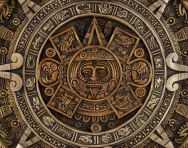
The Aztecs were a group of warriors who first settled in the valley of Mexico in the 14th century. They became some of the most important and powerful people in Mesoamerica and ruled a large empire in the 15th century.
The Aztecs were known for being rather fierce and in fact didn't have the best of reputations – they even sacrificed humans in order to keep the gods they believed in happy!
The Aztecs were very skilled people – great at hunting, fishing, farming and art – and what’s more they discovered chocolate!
Top 10 facts
1. The Aztecs were a group or tribe of warriors.
2. They lived as nomads, which meant they travelled around different parts of central America until they settled in the valley of Mexico around 1300.
3. They were known for being rather fierce!
4. The Aztecs built their own capital city, called Tenochtitlán, on a marshy island near the edge of Lake Texcoco.
5. You will now find Mexico City, the capital city of modern-day Mexico, where Tenochtitlán once stood.
6. The Aztecs built palaces, pyramids and temples and created a powerful city for themselves.
7. Religion was very important to the Aztecs and they believed in many gods.
8. It was important to keep the gods happy so the Aztecs even sacrificed human life to do just that!
9. Every Aztec male was trained as a warrior.
10. Aztec children had to go to school.
Timeline
- 1100The Aztecs leave northern Mexico and live life as nomads, travelling from place to place.
- 1200 to 1300The Aztecs arrive in the Valley of Mexico.
- 1325The Aztecs create their own capital city, Tenochtitlán.
- 1375Acamapichtli becomes the first powerful leader of the Aztecs.
- 1428The Aztec Empire is formed with a triple alliance between the Aztecs, the Texcocans, and the Tacubans.
- 1440The Aztec’s fifth and perhaps most successful leader, Montezuma I, comes into power. He greatly expands the Aztec Empire.
- 1519Spanish conqueror Hernan Cortes arrives in Tenochtitlán. He is treated very well by the Aztecs.
- 1520Cortes forms an alliance with the Tlaxcala – enemies of the Aztecs – and begins to attack the Aztecs.
- 1521The Aztecs are defeated by Cortes and he takes over the city of Tenochtitlán.
- 1522Tenochtitlán is rebuilt by the Spanish and called Mexico City, the capital of New Spain.


Boost Your Child's Learning Today!
- Maths & English resources delivered each week to your dashboard
- Follows the National Curriculum
- Keeps your child's learning on track
Did you know?
Although we know them as Aztecs, the Aztec people used to call themselves Mexica, which is where the name for the country of Mexico actually comes from.
The Aztecs had their own language (called N’ahuatl) and their writing was made up of pictures.
They often used to bury their dead family members right under or near their houses.
The capital city of Tenochtitlán was built on an island in Lake Texcoco. At the heart of the city stood the Great Temple, which was known by the Aztecs as Huey Teocalli. It is thought that around 200,000 Aztecs could have lived in the city.
The Aztecs practised polygamy, which meant the men could have more than one wife!
If someone was very poor, they would sell their own children into slavery or sell themselves (Aztec slaves could get married, have children and own their own land).
The Aztecs were very self sufficient, skilled at hunting, gathering and fishing. As well as the meat and fish they caught, corn and vegetables were the staple ingredients of the Aztec diet.
The Aztecs were creative people. Some were especially skilled at carving stone. Much of the Aztecs' art was about pleasing and honouring the gods so Aztec temples were covered with carving and stone sculptures.
The Aztecs liked music too. They played the pipes, trumpets, drums and rattles.
The Aztecs held a lot of markets. Lots of produce was on offer from basics like food, baskets and pots to more luxury items like cocoa beans and gold.
The Aztecs were among the first people to mix cacao beans with various seasonings to make a spicy, frothy drink which they called chocolatl. Cacao beans were seen as a gift from the gods; they were even, at times, used as currency. The Aztecs believed that drinking chocolate gave people some of their god Quetzalcoatl's wisdom (he was the god of learning and of the wind) and that the cocoa tree was a bridge between earth and heaven. When Aztec couples were married they drank a symbolic cup of chocolate and exchanged cocoa beans.
When the Spanish, led by Hernan Cortes, arrived in Mexico in 1519, the Aztecs had the most advanced civilisation in the whole region, having taken over all previous civilisations like that of the Maya.
Look through the gallery below and see if you can spot all of the following:
- Images of Aztec life from the Florentine Codex
- The archeological site of Teotihuacan, built in pre-Aztec times but named by the Aztecs
- Aztec carvings
- An artist's impression of Tenochtitlán
- Montezuma's "zoo"
- An Aztec sacrifice
Gallery
About
Before Christopher Columbus reached the Americas in 1492, the Aztecs were one of the continent's most important peoples.
They lived in the valley where Mexico City now stands and they built themselves a powerful city called Tenochtitlán. The city lay on a marshy island near the edge of Lake Texcoco and the Aztecs got about by canoe. By the early 1500s over 200,000 people lived in Tenochtitlán, making it one of the biggest cities of its time.
The Aztecs lived a nomadic life for some time. Legend has it that they were waiting to be shown where to establish their city; they were apparently looking for a sign of an eagle and a serpent fighting on a cactus!
Between the 1300s and 1521, the Aztecs were in control of an Empire that stretched from the Pacific coast down the Gulf of Mexico.
Religion was an important part of everyday Aztec life. They believed in many gods but the most important was the sun god, Huitzilopochtli.
The Aztecs had a reputation for being aggressive warriors. Another horrifying thing to learn is that they performed human sacrifice in order to keep the gods happy! At the dedication of the great pyramid temple in Tenochtitlán a terrifying 20,000 prisoners were sacrificed to the gods.
Learning to fight was very much part of being an Aztec. Showing bravery in battle was a great way of going up in the world and every Aztec male was trained as a warrior! The best warriors wore animal skins and feathers and headdresses to show their rank. It was going to battle so frequently that allowed the Aztecs to widen their empire and ultimately become more powerful.
Although the Aztecs were fierce fighters they were also skilled people. They were very good at hunting, gathering, fishing and trading and they were clever at gaining land which they used for farming. They gained land in battle but they also built small artificial islands in Lake Texcoco, where they had settled. Aztec art and architecture is amongst the finest ever produced in Mesoamerica.
The Aztecs were sporty. A popular game was called Ullamaliztli, which used a rubber ball. The players had to get the ball through a small stone ring without it touching the ground. The ball could only be touched with a player's head, elbow, knee or hip; apparently it was very difficult!
Education was of great importance to the Aztecs and it was compulsory for children to attend school though they were separated in the classroom both by gender and class.
The Aztecs had a solar calendar that they used to mark the important religious festivals in the year. Each year was made up of 365 days (18 months of 20 days plus an extra five days that the Aztecs believed to be unlucky).
The Spanish arrived in 1519 and overcame the Aztecs in just two years. They were amazed by the incredible temples, thriving markets and education and law and order sytems established by the Aztecs but horrified by the human sacrifices they perfomed.
Some Aztec words are used in Mexico today and form part of the Spanish language. Words such as chocolate, tomato and avocado have also become part of our language too!
Related Videos
Just for fun...
Make an Aztec-inspired 'sacrifice' knife by following the instructions on the amazing Mexicolore website, dedicated to the Aztecs
Print out some Aztec colouring pages
Watch a video of The Aztec Priests - Ain't Staying Alive Song from Horrible Histories
Learn to dye fabrics with cochineal, just like the Maya and Aztecs did
Find out what today's date is in tonalpohualli, the sacred Aztec calendar
Play a GridClub Aztecs digital game
Take an Aztec quiz to find out how much you know about Aztec religion and culture
Children's books about the Aztecs
Find out more
The DKfindout! children's guide to the Aztec empire
Discover the rich and brutal history of the Aztec culture through videos and information
Read a very informative account of the Aztec empire and see a map showing how far it spread
The Kiddle Encyclopedia guide to the Aztecs
See pictures of Aztec Mexico from the Tovar manuscript (also known as the Ramírez Codex) from 1585
Watch videos about the Aztec civilisation and the prophecy of Quexalcote
See the Aztec stone sculptures from the Metropolitan Museum of Art in New York City
Lots of information about the "First City of the Americas", Teotihuacán, and its Sun Pyramid
Discover wonderful facts about the history of chocolate
See for yourself
The British Museum in London holds thousands of objects from south America, including some Aztec turquoise mosaics. If you are able to visit the museum in person make sure you download an activity guide for your Aztec visit first!
Teotihuacán is one of Mexico's largest and most impressive archaeological sites. The Aztecs considered Teotihuacan to be a sacred place, even though it had been abandoned for hundreds of years by the time they named it.
What did Tenochtitlán look like? See some artists' impressions of what the city might have been.
The Brooklyn Museum has lots of Aztec objects to look at online.
